There are over 2000 different types of fleas in the world. They are such a wide range of creatures that can actually cause a lot of damage. Most of the species can latch to a number of hosts including humans, cats, and dogs at the same time. The worst thing is that in a lot of the cases the symptoms can be misinterpreted and lead to a wrong diagnosis. Ultimate care is important in order to keep your home and pets safe at all times.
Types of Fleas
Make sure to know about the different types of fleas, so that you can understand the danger that they represent.
Human Flea
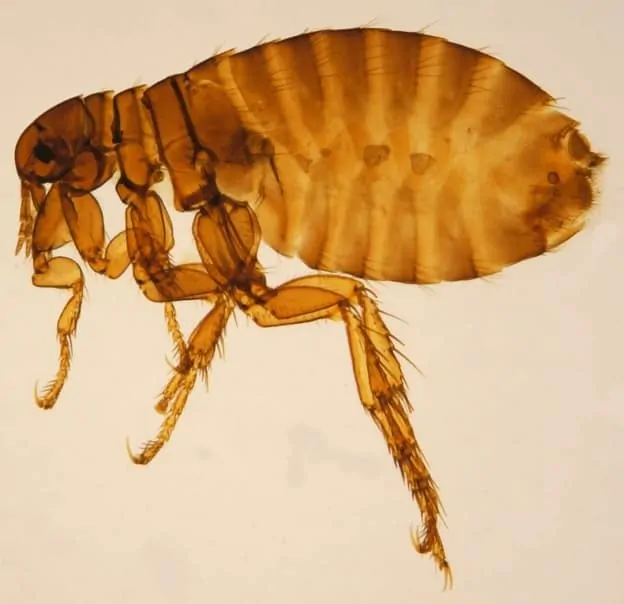
The human flea is a very common type that is a part of the Pulicidae family and Pulicinae subfamily.
Scientific Name: Pulex Irritans.
Mostly Seen: Although it is called a human flea, this type has a tendency to also bite other mammals such as dogs, cats, pigs and more. They love warm locations and have a tendency to thrive in hot places.
Distinctive Identification Characteristics: This type of fleas grows from 2 to 2.5 mm for the males and 2.5 to 3.5 mm for females. They feature a very small head and long abdomen and back. The abdomen is made of ten segments, while the antennae have five. Pulex Irritans has three separate pairs of legs.
Facts: Human fleas tend to bite, which turns out to be a problem for several different reasons. Pulex Irritans can also bite other mammals and transfer infections. The bitten regions are itchy, elevated from the surface and the symptoms can last up to a few weeks.
Dog Flea
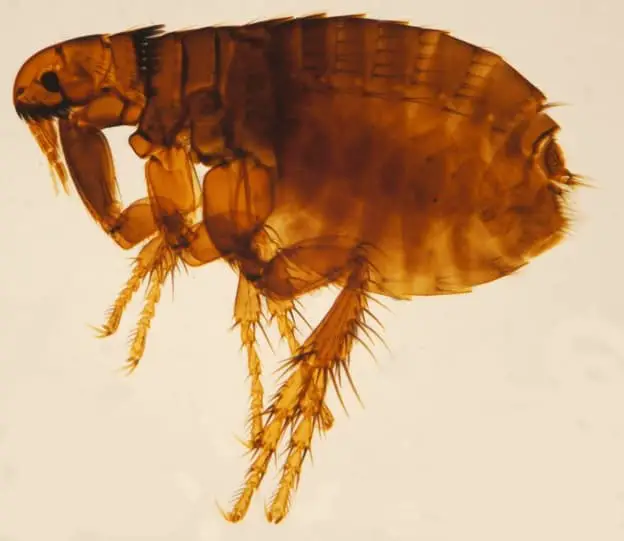
Dog flea is one of the most present different types of fleas that belong to the family Pulicidae.
Scientific Name: Ctenocephalides Canis.
Mostly Seen: This type of fleas is most commonly found on dogs, but that doesn’t mean that they can’t bite on cats or humans.
Distinctive Identification Characteristics: The most interesting characteristic about dog fleas are their strong teeth. Their main purpose is to penetrate through skin and hair so that they can suck on blood. There is between 2 and 3.25 mm in length. The Ctenocephalides Canis has seven to eight pairs of teeth on every single one of their six legs.
Facts: Ctenocephalides Canis tends to be located around the neck, head and the tail of dogs. The symptoms are intense itching and even biting.
Cat Flea
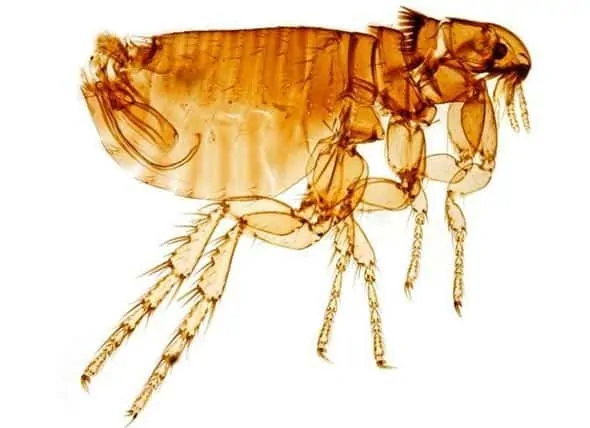
This species is an obligatory hematophage that in most cases feeds on domestic cats.
Scientific Name: Ctenocephalides Felis.
Mostly Seen: Ctenocephalides Felis is seen on domestic cats, but they also appear on dogs as well.
Distinctive Identification Characteristics: Cat fleas are strong and have the ability to jump long distances. They have four to five teeth on each of the six legs.
Facts: The most interesting thing about this species is that they can actually jump from one host to another in only seconds. They start feeding on blood right away. When they are left without a cat to latch on, Ctenocephalides Felis dies in a matter of hours.
Bird Flea
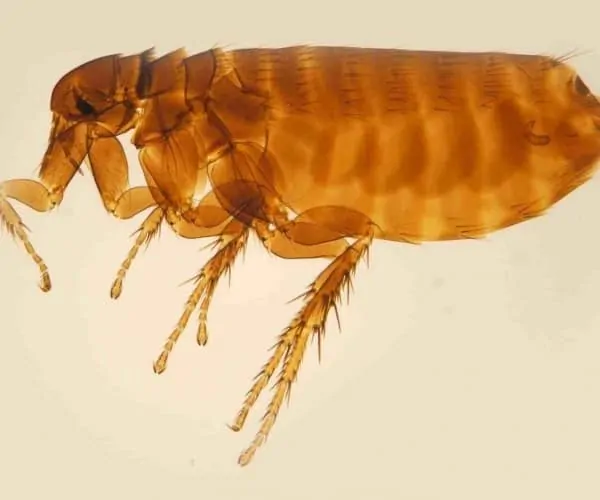
The bird flea looks for hosts in different bird species and is a part of the Ceratophyllidae family.
Scientific Name: Ceratophyllus Gallinae.
Mostly Seen: While the common knowledge suggests that this flea type tends to attack birds, it is also known that it attacks poultry, humans and other animals.
Distinctive Identification Characteristics: Ceratophyllus Gallinae grows up to 2.5mm in length. They have six legs and four to six teeth on each one. Thanks to their strong teeth, this species has the ability to pierce the skin.
Facts: Ceratophyllus Gallinae often stays in nests and if they don’t find the following bird victim, they might switch to humans.
Sand Flea
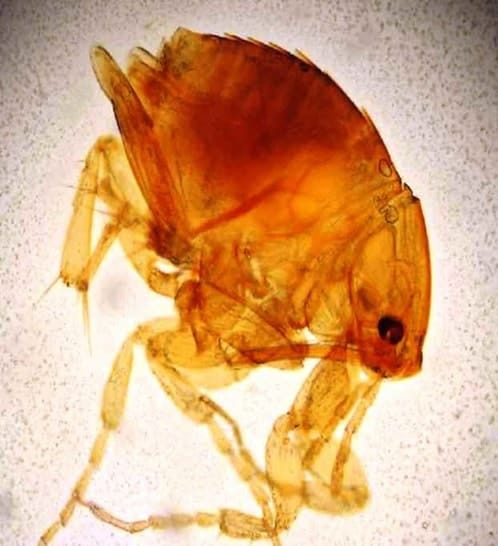
Sand fleas, also known as chigoe, are just a part of the different types of fleas. The name of their family is Hippidae.
Scientific Name: Tunga penetrans.
Mostly Seen: In warm, near-the-water areas, especially on tropical beaches. They can attach to both humans and house animals, especially dogs.
Distinctive Identification Characteristics: Cancer Emeritus looks like a very small crab or shrimp. A lot of people mistake them with sea animals. These are the smallest fleas with a size of 1 mm in length.
Facts: Be very careful next time you head to the beach. If you notice any strange bites that are very itchy and annoying, make sure to contact a professional. The thing with these fleas is that the females can lay eggs under your skin.
Sticktight Flea

Sticktight, hen, stickfast is the flea type that latches to a number of birds from the Pulicidae family.
Scientific Name: Echidnophaga Gallinacea
Mostly Seen: It is usually attached to birds, but it can find other mammals as hosts. Humans, horses, poultry are just a part of the other possible victims.
Distinctive Identification Characteristics: It gets the sticktight name for a reason. This flea sticks so tight to the surface of the host, that it’s almost impossible to remove it. They attach their head inside the skin.
Facts: The worst thing about this species is that they can lead to a number of complications including anemia.
